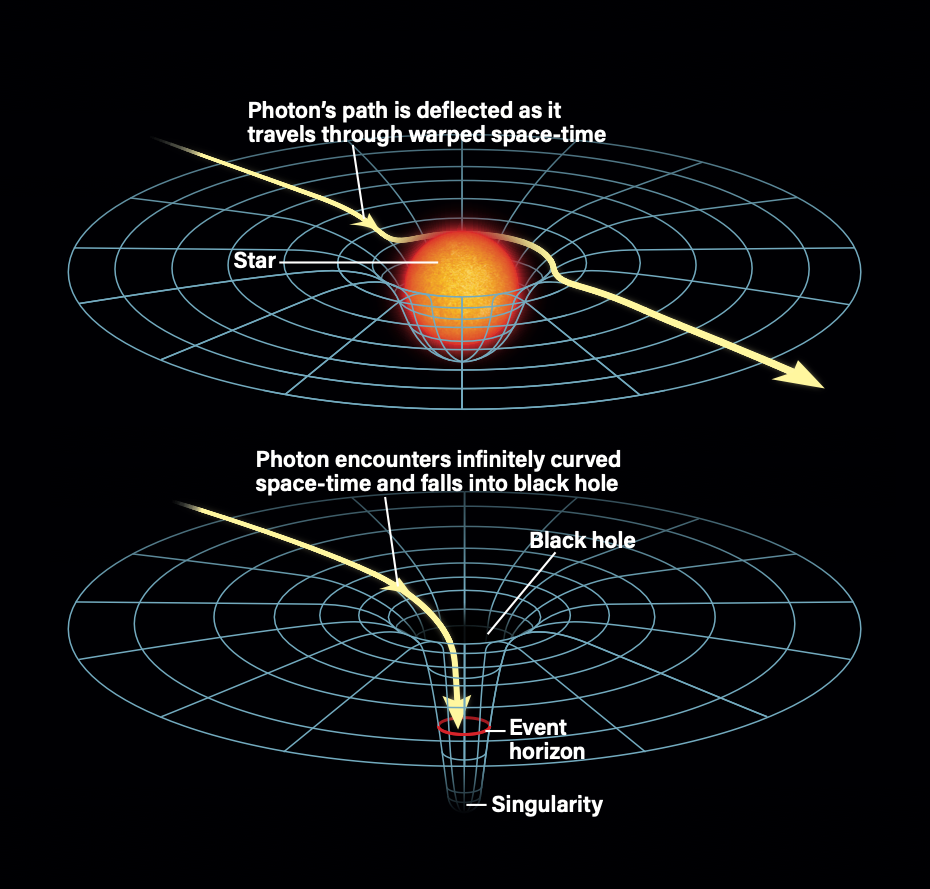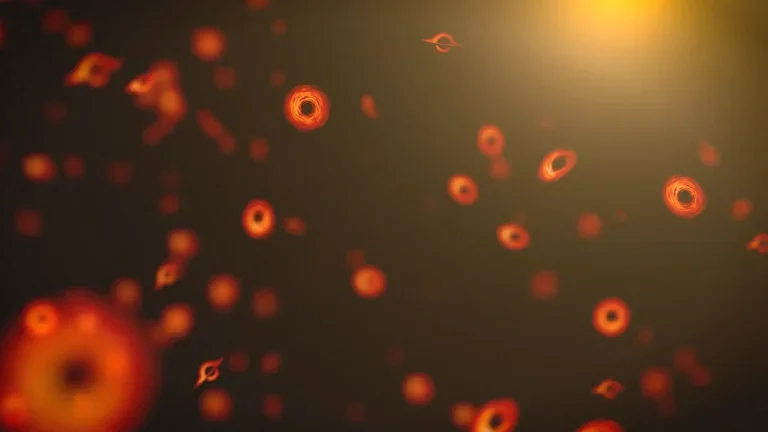
How can a black hole pull light into itself if a photon is massless?
Dennis Murphy
Fort Bragg, California
Photons are indeed massless, but they still travel through our universe. You can picture the fabric of the cosmos as a sort of grid — one that is four-dimensional and incorporates not only the three dimensions of space, but also the fourth dimension of time (hence, why we call it space-time).
For this purpose, though, let’s throw out time and picture the universe simply as a three-dimensional grid in all directions. Objects with mass distort this grid in the same way that placing a bowling ball on a mattress will cause the mattress to dip. The more mass an object has, the more it bends the grid around itself in all three dimensions. So, instead of imagining gravity as a pulling force, imagine it as a distortion in the grid, or terrain, of the universe. Thus, every particle that moves through the universe — regardless of whether the particle itself has mass — is affected by the distortions in space-time caused by massive objects.
Illustrations representing the effects of mass on space-time in this way are called embedding diagrams; keep in mind that they are a bit limited and don’t show exactly what’s going on in the right number of dimensions, but they are still a good way to grasp the concept of how mass bends space-time!
Using this analogy, you can picture a black hole not as a bowling ball distorting the mattress or grid, but as a funnel. Near the opening of the funnel, there is a point where space-time curves so much that, after passing this point, nothing in the universe has enough energy or speed to climb back up out of the funnel and escape — not even light. That boundary is the black hole’s event horizon.
Let’s get back to our photon. Picture it moving through the universe. Photons move straight through space, but if that space itself is curved, then the photon will follow that curve as it travels. In the case of a planet or star or galaxy, if a photon passes close to the region of space-time that is distorted, then light will appear to curve around that object — a phenomenon that causes gravitational lensing.
But what if the space-time that a photon skims too near is infinitely curved downward into a funnel? Then its path will curve into the funnel — i.e., the black hole. So, photons aren’t pulled into black holes so much as their formerly straight paths simply travel through regions of space-time that are so curved that the photon falls into the gravitational well of the black hole. Once past the event horizon, it’s unable to escape.
Alison Klesman
Senior Editor









